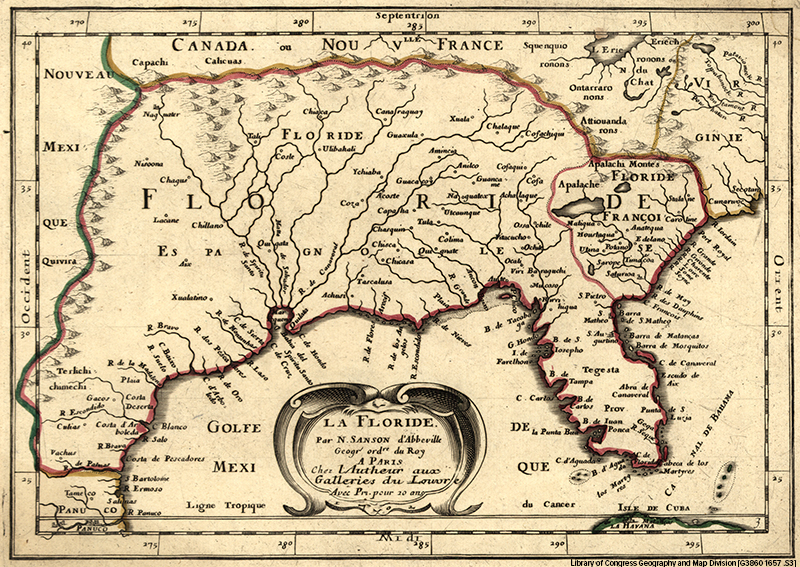Gulf of America: What’s In a Name?
Think about the name of your city, town, or state. It can be strange to imagine how the land you live on was once called something else. In fact, the names of places and landmarks are constantly changing to reflect changing ideals, values, and political ownership. Here, Election Central takes a closer look at the Trump administration’s recent decision to rename some key locations with the goal of “Restoring Names that Honor American Greatness.”
Gulf of America/Gulf of Mexico
On January 20, 2025, newly inaugurated President Trump issued an executive order to rename the Gulf of Mexico as the Gulf of America. His reasons for doing so were that this body of water is essential to U.S. history. On February 10, 2025, all official government sources–such as the U.S. Board on Geographic Names (BGN), the CIA World Fact Book, and the State Department website–applied the change to agree with the president’s order. Google Maps has also officially updated the name for American users, though it is not a federal government source. However, it remains labeled as the Gulf of Mexico for other Google Maps users in different world locations.
This is not the first time that this body of water has undergone a name change. In 1589, English geographer Richard Hakluyt referred to the gulf as the “Gulfe of Mexico.” But in the same year, other maps and publications referred to the same body of water as the “Baye of Mexico,” or the “Gulf of New Spain,” or the “Florida Sea.” Today, since the Trump administration’s recent renaming, many online publications and maps have begun referring to the area as Gulf of America/Gulf of Mexico.
Mt. McKinley/Denali
North America’s highest mountain peak is in Alaska. The Koyukon Athabascan Native Americans named this mountain Denali (meaning “the high one”). In 1896, the U.S. government renamed the mountain Mt. McKinley to honor President William McKinley, who was elected that year. (McKinley was from Ohio and never even visited Alaska.) In 2015, President Barack Obama’s administration changed the name of the mountain back to Denali. This was done to reflect the tradition and history of Alaska’s Native Americans. Despite a resolution from the Alaska State Legislature urging the Trump administration to keep the name Denali, the name has now been officially changed back to Mt. McKinley. As with the Gulf of America/Gulf of Mexico, the name change is now reflected in federal government source material.
A History of Name Debates
Disagreements over the names of many of the U.S.’s most treasured natural and historic landmarks have been ongoing for several decades. Activists on both sides of these naming battlesare trying to promote names that they deem more historically appropriate.
For example, Davis Peak (Nevada’s second-highest mountain) was named for Jefferson Davis, the president of the seceded Southern states that fought the United States during the Civil War. Recently, the mountain has been renamed Wheeler Peak to avoid honoring a Confederate leader. Similarly, Custer Battlefield National Monument (named for General George Armstrong Custer), was changed in 1991 to Little Bighorn Battlefield National Monument\, to better reflect the Native American perspective.
Renaming an area, especially an area in a U.S. National Park, is tricky. On the one hand, it is important to honor, and not erase, Indigenous people’s history with culturally insensitive names. On the other hand, even when some groups might find a name offensive, other groups might depend on that name for traditional (and even tourism-related) reasons. There is also the required cost of replacing signs, maps, brochures, souvenirs, and other promotional materials when such a naming change occurs. Often, renaming a place involves striking a complicated balance between the needs of different groups of people.
Names Around the World
The names of beloved landmarks in the United States aren’t the only ones under dispute. A well-known flat-topped mountain located in the Australian desert is one such world landmark with its own naming controversy. This sacred place was called Uluru by the Pitjantjatjara Indigenous people of Australia. It was renamed Ayers Rock in 1873. Since 1993, however, it has been referred to by both names.
Names around the world are constantly shifting due to changing political power and influence. A body of water in the Middle East is referred to in different places (and by different people) as the Persian Gulf and the Arabian Gulf. One country is called both Myanmar or Burma, depending on where you are. What China calls the South Sea is called the East Sea by Vietnam and the Sea of Japan by the United States. And what is the name of the world’s highest mountain? You probably guessed Mt. Everest. But this is not its name everywhere in the world. The mountain, located on the border of China and Nepal, is called Sagarmatha by the Nepalis and Chomolungma by the Chinese.
So, What’s In a Name?
But why is a place’s name so important? There are several reasons, ranging from obvious to complicated. In some cases, maybe it’s as simple as changing a name to something more appealing to boost tourism. But it usually means a lot more than that. First, renaming a landmark or area reflects the culture or national control of that area. It can also be a way to recognize different cultural histories in a geographic area. But doing so may prioritize one group’s history over another’s. This is the root of renaming debates in the U.S. National Parks System. Some people with to use the historical names used by Indigenous peoples. Others wish to usethe names that were given to them later, usually by white explorers.
But renaming can also signify important political changes. For example, post-Soviet Europe and post-Apartheid South Africa have changed names of many places to signify new beginnings and a movement forward.



